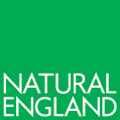Managing beaver activity and land without a licence
Published 2 September 2022
Applies to England
This is statutory guidance published under sections 4 and 9 of the Natural Environment and Rural Communities Act 2006. The Beavers (England) Order 2022 (SI 2022/858) makes the beaver (Castor fiber) a European protected species, by including it in Schedule 2 of the Conservation of Habitats and Species Regulations 2017 (the ‘Habitats Regulations’). This protection comes into force on 1 October 2022.
Regulation 43 of the Habitats Regulations sets out the legal protection of the species included in Schedule 2 by listing potential offences. Unless you have a licence from Natural England, it is against the law to:
- deliberately capture a beaver
- deliberately injure or kill a beaver
- deliberately disturb a beaver in a way that affects their ability to survive or breed
- damage or destroy a beaver breeding site or resting place
- possess a beaver or its body parts
- transport a beaver
- sell or offer a beaver for sale
Impact of beavers
Beavers can:
- improve water quality
- reduce the risk of flooding and drought
- increase biodiversity
- create more resilient landscapes to reduce the impact of climate change
They also dig burrows and channels into banks of waterbodies (for example, a lake, river or stream), fell trees and build lodges and dams, which may cause:
- flooding to adjacent land
- injury to livestock
- damage to crops, property or machinery
Continue to manage your land without a licence
You can continue to carry out normal land management activities like ploughing and cultivating if you have beavers on your land.
You must not damage a dam, burrow or lodge while carrying out land management activities.
Guidance is available to help you identify beaver dams, burrows and lodges. This guidance also has information on how you can:
- protect machinery
- protect beaver structures from damage
- make space for beavers
Prevent beaver problems without a licence
Guidance is available on how to manage beavers and when you need a licence. This includes management actions you can take to prevent or reduce negative effects of beaver activity, without deliberately disturbing beavers or damaging breeding and resting sites. If you follow the guidance, you can take these actions without committing an offence and without needing a beaver management licence. You could:
- make a natural space for beavers - this may include planting native trees and shrubs within 20m of a river, stream or lake
-
install fencing to protect your property from beaver activity – for example, to keep beavers away from crops, woodland and vulnerable structures
- fit protection to vulnerable trees – for example, you can use tree guards or textured tree paint
- remove or modify dams less than 2 weeks old – if you remove an older dam without a licence, you could be breaking the law
- remove inactive burrows – if you are sure that beavers are no longer using them
- fill in beaver channels with materials not harmful to beavers – infilling must not affect active burrows or lodges
- use scarers which use unpredictable sights and sounds to discourage unwanted beaver activity when beavers first move into an area – you must make sure these devices do not affect the ability of beavers or other protected species to breed or survive
Protection and management of beavers in England has a 5-step approach to beaver management. You can follow the steps to minimise or prevent conflicts between beaver activities and:
- people
- land management
- the environment
Permits and permissions you might need
You must have a permit from the appropriate risk management authority if you’re carrying out certain activities in or near a body of water.
You might need to get permission or a permit to work in certain protected or vulnerable areas.
Further information on permits and permissions you may need is available in Beavers: how to manage them and when you need a licence.

